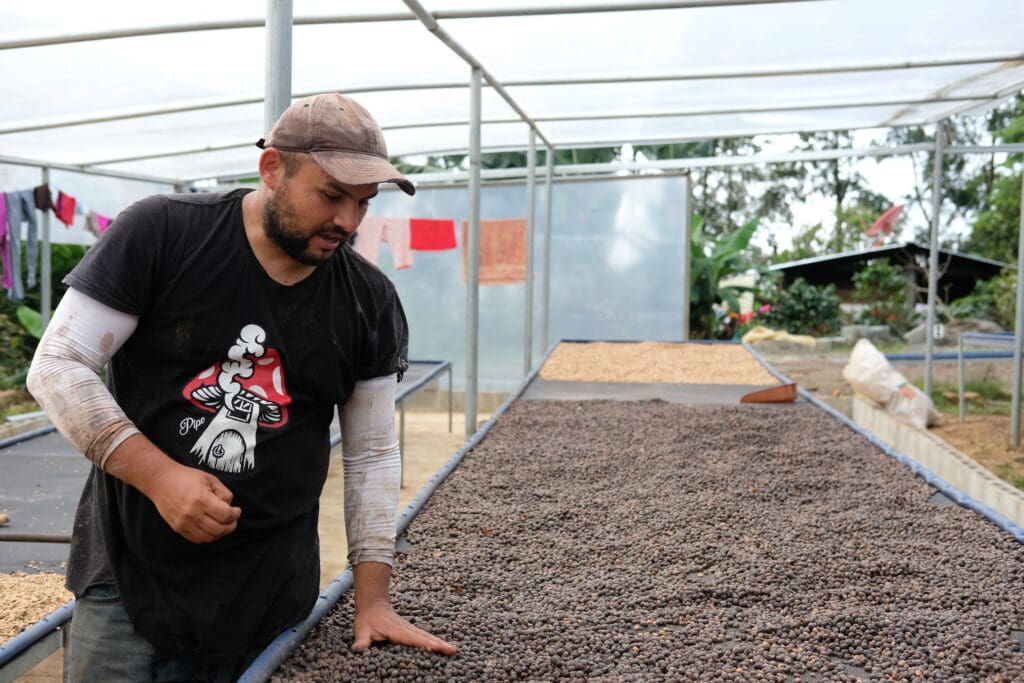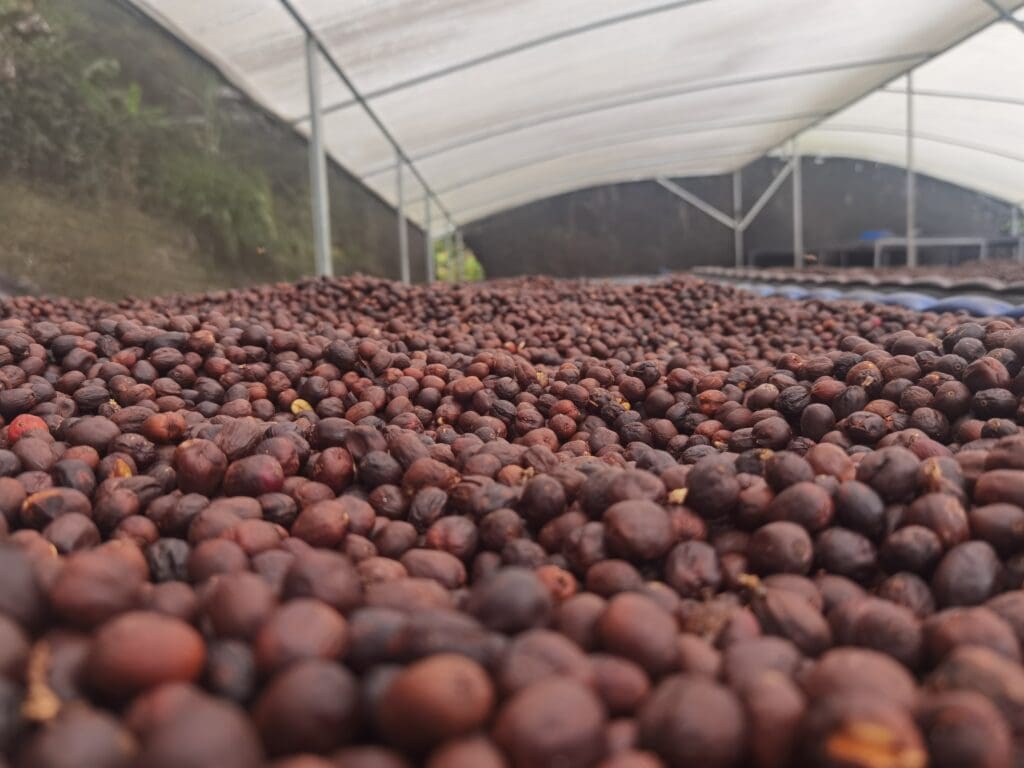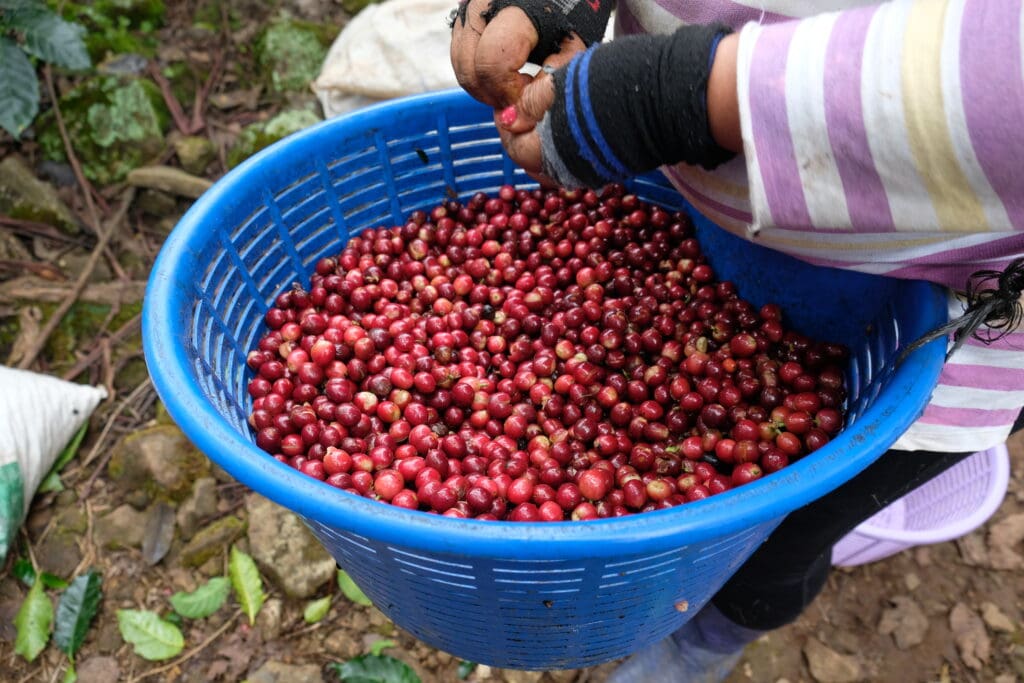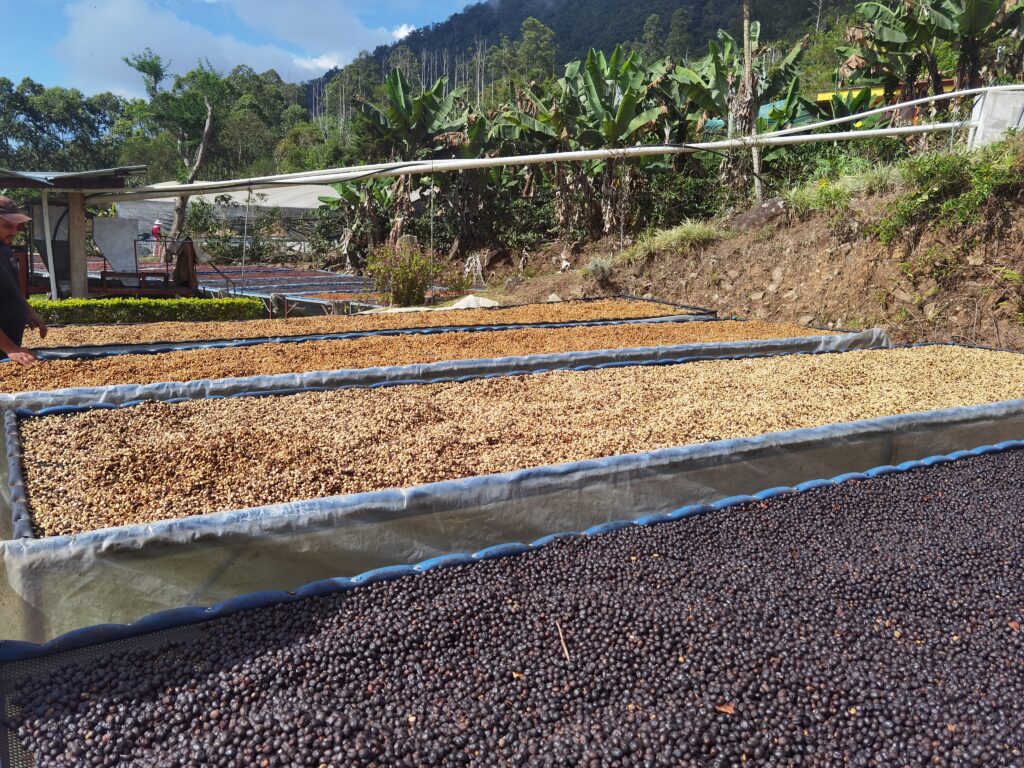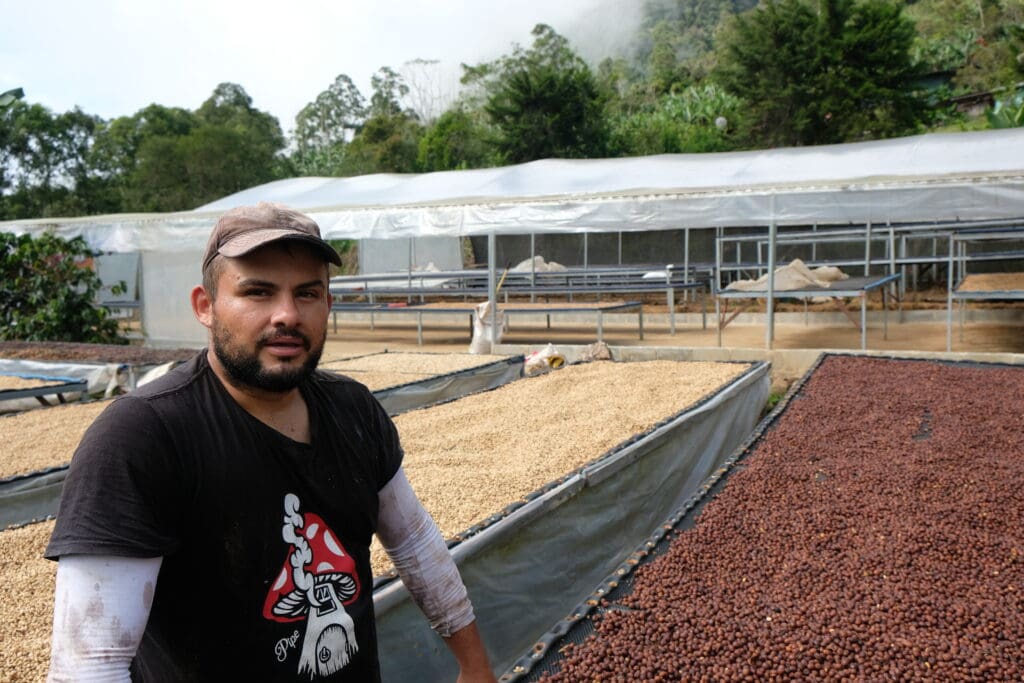Don Senel Micromill was founded by Senel Campos in 2014 as a response to poor coffee prices at the time. In his first year, Don Senel processed 300 kg of coffee from Finca La Toboba, fitting a motor from a washing machine to an old hand pulper and using the basic infrastructure already in place at the mill.
This first lot scored well, and during the next harvest Senel would purchase and process as much coffee as possible to earn the money needed to buy new equipment, improve the drying areas, and to invest in purchasing land with good conditions for cultivating new varieties known for their complex and high-quality cup profiles.
The micromill has changed quite a lot from its beginnings in 2014, including raised beds and greenhouse drying areas and more modernized equipment and tools. Processing at the mill has also changed from the more traditional practices utilized at first, now involving the measurement and tracking of variables like pH and brix degrees to control and influence the final cup profile of each microlot.
The introduction of the Catiguá MG2 variety in Costa Rica by ICAFE has generated considerable interest among Central American producers and technicians eager to understand its characteristics and advantages. Developed in Brazil in 1980 by EPAMIG/UFV, this variety is a cross between Catuaí IAC 86 and Timor Hybrid UFV 440-10, which provides rust resistance. Named after the historical coffee-growing region of Patrocínio in Minas Gerais, Catiguá MG2 was selected over several generations to ensure quality and resilience. This variety shows promise in meeting Costa Rican producers’ demand for quality and disease-resistant coffee plants.
The name La Cuiscana comes from a native fire ant known for its painful sting, commonly found in this lot on the farm.
This coffee’s meticulous maceration process begins with cherry selection based on BRIX levels, ranging between 28 to 30, to ensure high sugar concentration. Once selected, the cherries are sent to the facility where further sorting removes any that don’t meet the required standards, maintaining the integrity for the maceration process. The selected cherries are then placed on raised beds and turned every two hours over four days to remove excess moisture. Following this, they’re transferred to sealed tanks for carbonic maceration, where natural carbon dioxide is produced as microorganisms begin breaking down the sugars. The coffee typically ferments for 4 to 6 days, with frequent pH checks targeting a range of 3.8 to 3.9. Once this pH is achieved, the coffee is returned to raised beds to dry slowly over 22 to 30 days, under controlled temperatures of 25 to 28°C to protect the bean’s integrity. After reaching a moisture content of 10%, the coffee is stored in a temperature-controlled warehouse set at 18°C to rest for approximately two months, allowing the beans to stabilize.
This lot of Obata underwent Anaerobic Natural processing at Don Senel Micromill. Freshly harvested cherries are first fermented whole on raised beds for three days. The partially fermented cherries are then sealed into plastic barrels where they undergo anaerobic fermentation for four days. The fermented cherries are then dried first on raised drying beds before drying is finished in a drum drying oven. Total drying time is 30–40 days.


